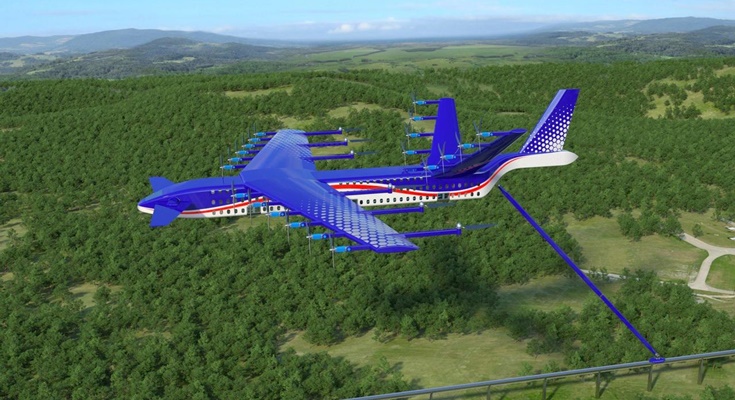Industry news archive
A "flying tram" capable of transporting hundreds of people at a speed of 700 km / h over an unlimited distance - this is the concept developed by engineers. According to their idea, a roomy three-tiered electric plane will be able to fly and transport people, receiving energy from the ground through a sliding electric cable connected to a metal rail under voltage.
Today you will not surprise anyone with electric vehicles - their popularity is growing not only in America, Europe, but also in Kazakhstan. Looking at such a success of automakers, aircraft designers began to create projects for electric aircraft. However, things are not going so smoothly in this area. The main problem is heavy batteries. It is they who do not allow electric-powered aircraft to make long flights.
It was this shortcoming that the engineers decided to eliminate. they removed the batteries from the electric plane, and fed it with energy like a tram or trolleybus. This means that the aircraft is “attached” by a movable cable to a metal rail that is energized and supplies electricity.
Thanks to this, it is possible to increase the power of electric motors, flight speed, and also to increase the size and carrying capacity of the aircraft several times. According to the calculations of engineers, such a hybrid of an airplane and a tram is capable of transporting up to 2 thousand people or 160-180 tons of cargo at a speed of 500-700 km / h. Thanks to the system of movable propellers, the electric plane will be able to take off vertically and quickly gain speed. The distance that such an aircraft will cover will depend only on the availability of an energy transmission rail and connection to a powerful source of electricity.

On the one hand, such a “flying tram” will indeed have impressive speed and carrying capacity. On the other hand, it lacks autonomy and depends entirely on the availability of infrastructure. Moreover, in real prototypes, it will be necessary to work out a smooth descent system in case of an emergency power outage.













